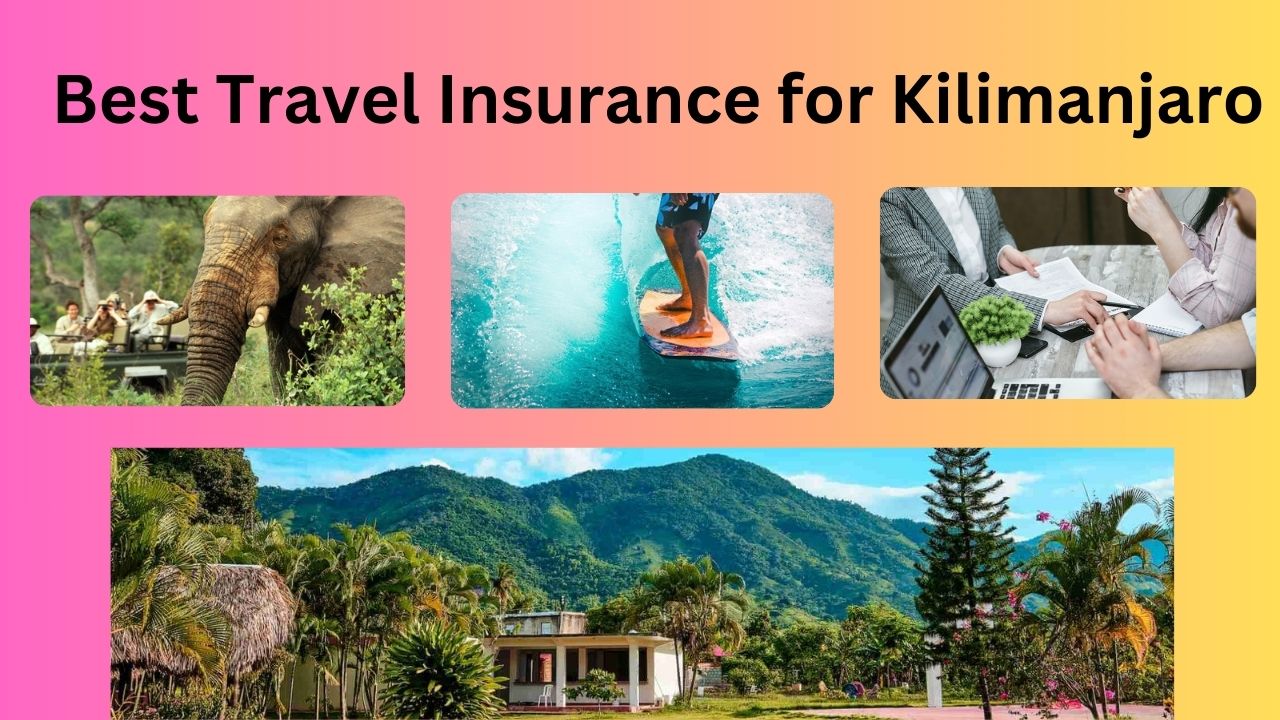Climbing Mount Kilimanjaro is a dream adventure for many, but it’s also an endeavor that comes with its fair share of risks and uncertainties. Whether you’re an experienced trekker or a first-time climber, it’s crucial to be prepared for the unexpected when embarking on such an expedition.
One way to protect yourself and your investment is by purchasing the best travel insurance for Kilimanjaro. In this comprehensive guide, we’ll explore what to look for in a policy and review some top options to help you make an informed decision.
Why Do You Need Travel Insurance for Kilimanjaro?
- Medical Coverage: Climbing Kilimanjaro is physically demanding, and altitude-related illnesses such as altitude sickness can be a real concern. Travel insurance can cover the cost of medical treatment, including emergency evacuations if necessary.
- Trip Cancellation/Interruption: Life is unpredictable, and sometimes you may have to cancel or cut short your Kilimanjaro adventure due to unforeseen events. Travel insurance can help you recover the costs of your trip in such situations.
- Lost or Stolen Gear: Expensive gear like hiking boots, clothing, and equipment are essential for a successful Kilimanjaro climb. The right insurance can compensate you for the loss or theft of these items.
- Delayed or Lost Luggage: Imagine arriving in Tanzania, only to discover that your luggage is still in another country. Travel insurance can provide reimbursement for necessary purchases until your belongings arrive.
- Evacuation Coverage: In case of emergencies, getting evacuated from the mountain may be necessary. Travel insurance with evacuation coverage ensures that you can receive timely assistance and transportation to a medical facility if needed.
What to Look for in Kilimanjaro Travel Insurance?
- High Altitude Coverage: Ensure your policy explicitly covers high-altitude trekking and any associated risks like altitude sickness. Check for altitude limits and any special requirements.
- Medical Coverage: Verify that your insurance offers adequate medical coverage, including evacuation and repatriation. Ascending to high altitudes comes with health risks, and you need to be prepared for any emergencies.
- Trip Cancellation/Interruption: Look for a policy that provides coverage for trip cancellation or interruption due to both medical and non-medical reasons. Ensure that it includes the full cost of your trip.
- Gear Coverage: If you’re bringing valuable gear, such as high-quality hiking boots and cold-weather clothing, find an insurance plan that includes coverage for lost, damaged, or stolen equipment.
- Emergency Assistance: Opt for a policy that offers 24/7 emergency assistance. In remote locations like Kilimanjaro, quick access to help can be a lifesaver.
- Pre-Existing Conditions: Disclose any pre-existing medical conditions to your insurer and check whether they are covered. Some policies may offer coverage with specific needs.
Top Travel Insurance Options for Kilimanjaro
- World Nomads: World Nomads is a popular choice among adventure travelers. They offer comprehensive coverage for high-altitude trekking, including Kilimanjaro. Their policies also include coverage for gear, trip cancellation, and emergency medical assistance.
- IMG Global: IMG Global offers specialized travel insurance plans for high-altitude trekking. They provide coverage for medical emergencies, trip cancellations, and evacuation from remote locations.
- Allianz Global Assistance: Allianz offers a range of travel insurance plans that can be tailored to your specific needs. They provide coverage for medical emergencies, trip interruption, and gear protection.
- Travelex Insurance: Travelex offers various travel insurance plans with options for adventure travelers. They provide coverage for medical emergencies, trip cancellations, and lost or stolen gear.
- AIG Travel Guard: AIG Travel Guard offers comprehensive travel insurance coverage, including medical and trip-related benefits. Their policies are suitable for Kilimanjaro climbers seeking peace of mind.
Pros and cons of Best Travel Insurance for Kilimanjaro
Certainly! Here’s a list of the pros and cons of climbing Mount Kilimanjaro:
Pros
- Breathtaking Scenery: Kilimanjaro offers stunning vistas of diverse landscapes, from lush rainforests to alpine deserts, culminating in the iconic snow-capped peak.
- Achievement and Bragging Rights: Reaching the summit of Kilimanjaro is a significant accomplishment and a fantastic story to share with friends and family.
- Cultural Experience: The trek often includes encounters with local communities, providing opportunities to learn about Tanzanian culture and traditions.
- No Technical Climbing Skills Required: Kilimanjaro is a trekking peak, meaning you don’t need advanced technical climbing skills or equipment to reach the summit.
- Accessibility: Kilimanjaro is relatively easy to access, with regular flights to Kilimanjaro International Airport and a well-established tourism infrastructure.
- Minimal Gear Required: Compared to other high-altitude mountains, you need less specialized gear for Kilimanjaro, making it more accessible.
- Guided Tours: You can opt for guided tours, which provide experienced guides, porters, and cooks to make the trek more comfortable and enjoyable.
Cons
- Altitude Sickness: The altitude can pose serious health risks, and altitude sickness is a common problem for climbers, potentially leading to discomfort or even the need to turn back.
- Physical Demands: Climbing Kilimanjaro is physically demanding. The trek requires stamina, endurance, and the ability to adapt to changing altitudes and weather conditions.
- Acclimatization: Adequate acclimatization is essential to reduce the risk of altitude-related illnesses, which may require extra days on the mountain.
- Cost: Climbing Kilimanjaro can be relatively expensive, with costs for permits, guides, gear, and accommodations adding up.
- Environmental Impact: High levels of tourism on Kilimanjaro can have a negative impact on the environment, including litter and overcrowding.
- Unpredictable Weather: Weather conditions on Kilimanjaro can be highly variable, with temperatures ranging from hot to extremely cold, and conditions can change rapidly.
- Physical Discomfort: Climbers may experience various discomforts, including blisters, muscle fatigue, and sleeping in basic accommodations.
- Lack of Guarantee: There’s no guarantee of reaching the summit due to factors like health, weather, and individual fitness levels.
Conclusion
Climbing Mount Kilimanjaro is a remarkable adventure that requires careful planning and preparation. Selecting the best travel insurance for Kilimanjaro is a crucial step in ensuring your safety and financial security during your journey.
Be sure to assess your specific needs, consider the risks, and choose a policy that provides comprehensive coverage for your Kilimanjaro expedition. With the right insurance in hand, you can embark on this once-in-a-lifetime adventure with confidence and peace of mind.
In summary, climbing Mount Kilimanjaro is a remarkable adventure with breathtaking scenery and cultural experiences.
However, it comes with challenges, such as altitude sickness and physical demands. Weighing the pros and cons will help you determine if this iconic trek is the right adventure for you.




